This doesn't change during a most transformations.
What is the size?
The word that describes translating.
What is sliding?
This word is another way of saying reflecting
What is flipping?
The graph depicts a rigid transformation.
What is a translation 1 unit right 2 units down? (x,y)->(x+1,y-2)
(x+4, y-2) is the rule for what transformation?
Translation right 4 and down 2
These are the types of transformations that does not change the size.
What are reflections, translations, and rotations?
If you Translate (-5,8) T4,-3
you new point is?
(-1,5)
This is the same in the image, preimage, and line of symmetry in a reflection.
What is the distance from the figure to the line of symmetry?
The given graph depicts a rigid transformation.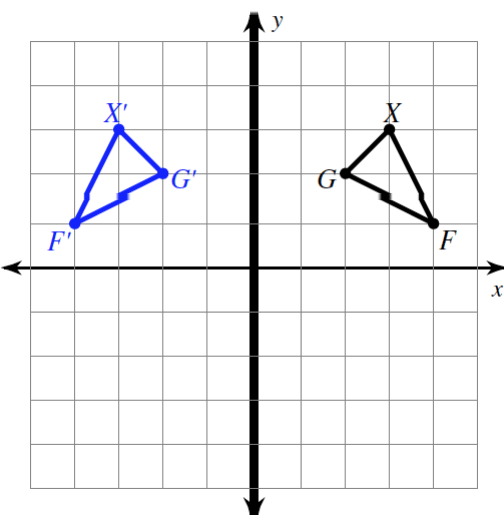
What is a reflection in the y-axis?
(-x,-y) is the rule for 2 different transformations, give me one
Rotate 180 degrees or reflect over the origin
The picture below shows this type of transformation.
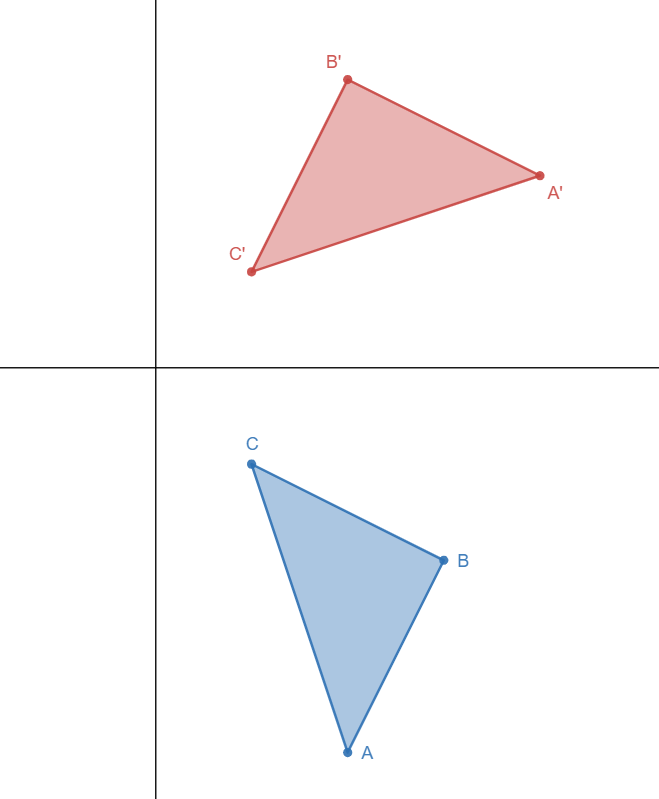
What is rotating?
This is the image coordinate pair when the preimage (1, 6) is translated to the left 3 and down 1.
What is (-2, 5)?
This coordinate changes when a figure is reflected over the x-axis.
What is the y-coordinate?
The given graph depict multiple transformations of the pre-image *. This image depicts a Reflection of * across the y-axis.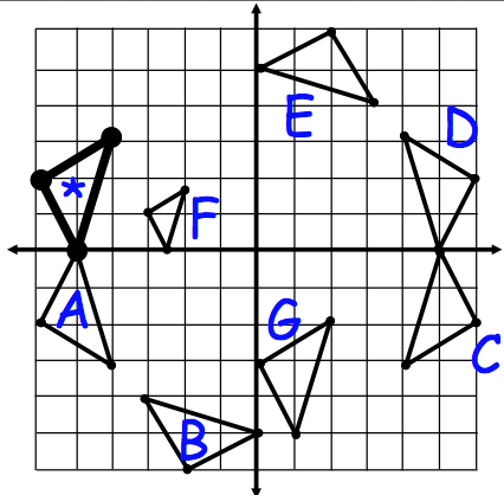
What is D?
(-x,y) is the rule for what transformation?
Reflect over the y-axis
This notation(symbol) is how we differentiate the preimage from the image.
What is prime?
If the point (4,8) is the result of the translation up 5 and left 6, what was the original point?
(-1, 2)
The figure has been reflected over this line.

What is the x-axis?
The given graph depicts a rigid transformation.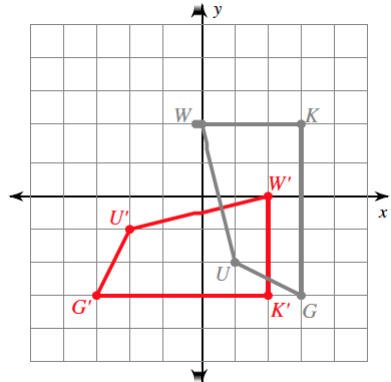
What is a 90-degree clockwise rotaition?
(2x,2y) is the rule for what transformation?
Dilation of 2
This figure is the image in the following reflection:
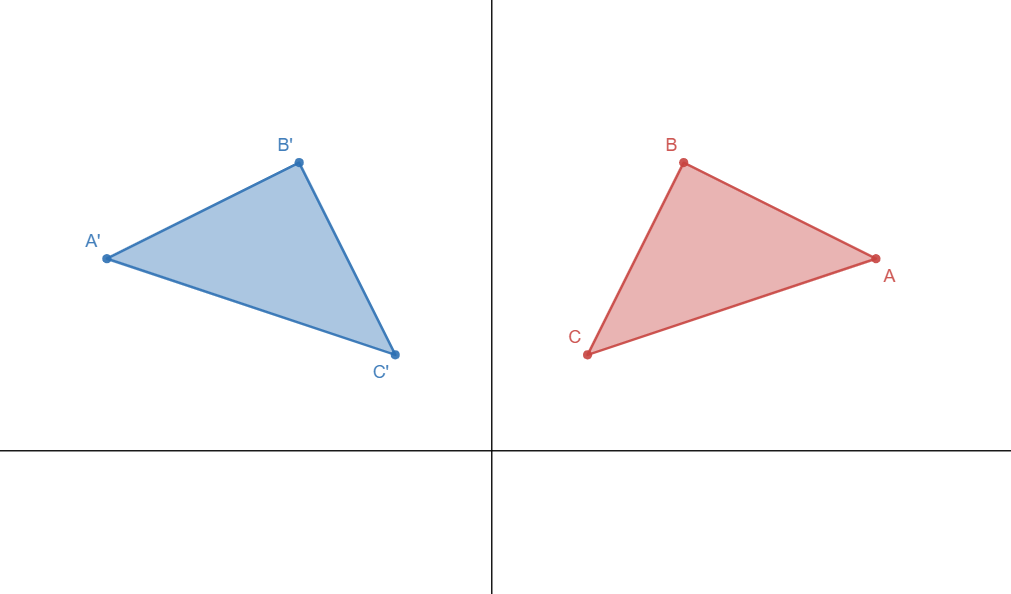
What is the blue figure?
The shapes are translated in this direction these many units.

What is left two units, up two units?
This is the coordinate A' after the figure below has been reflected over the given line.

What is (6, 1)?
The given graph depicts rigid transformations of the pre-image *. This triangle represents a Rotations of * 90-degrees counterclockwise about the origin. 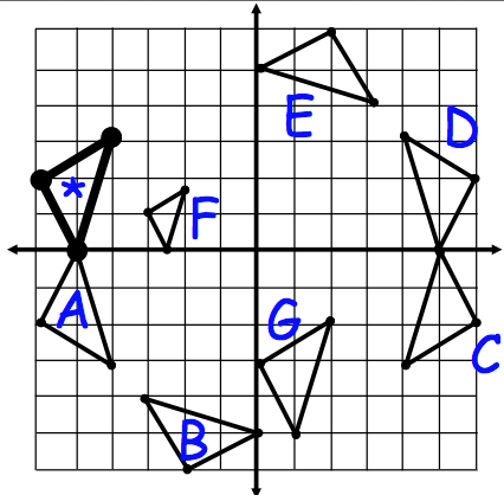
What is figure B?
(-y,x) is the rule for which transformation?
Rotate 90 degrees counter clockwise
These transformations does preserve congruency of a given figure.
What is translation, reflection, rotations?
If you take a triangle, reflect it, then rotate it, will it maintain congruence? Will the sides stay equal?
yes
The rule for the given rigid transformation.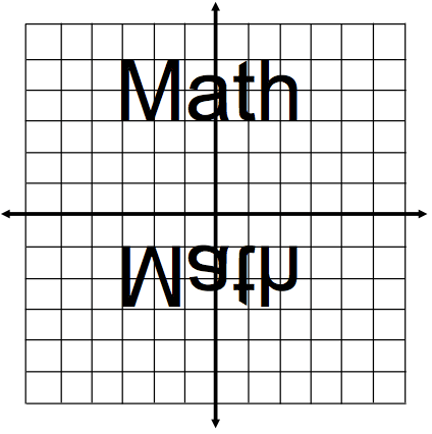
What is a Reflection across Horizontal y=1?
The given graph represents transformations of the pre-image *. This figure depicts a Rotation of the pre-image clockiwse about the origin.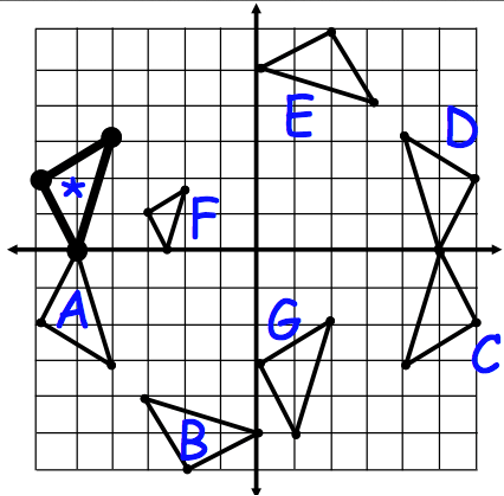
What is figure C?
(y,-x) is the rule for what transformation?
rotate 90 clockwise
This transformation does not preserve congruency.
What is dilation?
True or false?
Translating the point (2,4) down 4 and left 8, is the same as rotating it 180 degrees.
True
Which reflection is the same as rotating 180 degrees?
Reflection over the origin
These two transformations have occurred to the given figure. 
What is a Reflection across the x-axis and then translated 10 units right and 2 units up.
(-x,-y) is the rule for reflecting over the origin and rotating 180 degrees. Name 2 transformations that you can do together to get the same results.
Reflect over the x then the y xis
Rotate 90 clockwise or counter clockwise twice